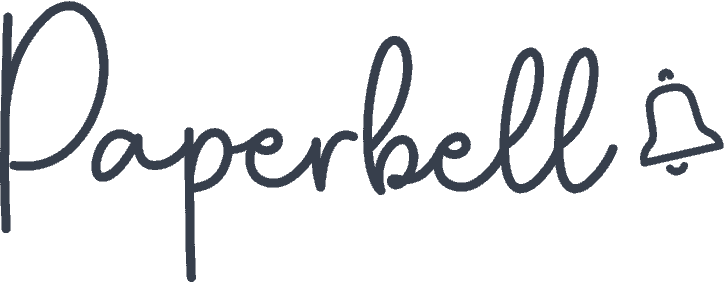A sample coaching session is usually the first real interaction between you and the client. It sets the tone for the coaching relationship and gives them a taste of your coaching style and approach.
So how do you structure a sample coaching session to give the best experience to clients? Read on for some detailed templates you can use tailored to your niche.
What Are the 5 Basic Elements of a Coaching Session?
Every coaching session, whether a sample or regular meeting, includes these elements. They each build on each other, making sure your time with the client is focused on getting them closer to their objectives.
Here are the five stages of productive coaching sessions.
1. Rapport Building
This is the starting point of every coaching session, and it’s especially crucial with new clients. If they feel comfortable, it will be much easier to work with them.
To create a safe and supportive environment, you can ask them how they are feeling that day, listen actively, and acknowledge what they are saying. If it’s a follow-up meeting, this is also a great time to discuss what they have experienced since your previous session in relation to their overarching goals.
This sets the tone for open dialogue and meaningful conversations.
2. Goal Setting
The next step is to define the focus of the coaching conversation.
At your first appointment, this might mean clarifying why the client sought coaching and what they hope to achieve in both the short and long term. In subsequent sessions, it could involve revisiting broader objectives or addressing specific challenges the client wants to tackle that day.
This step is crucial to stay aligned. Without it, sessions may drift aimlessly, leaving the client feeling unfulfilled or unclear about their progress.
3. Exploration
This phase is all about uncovering the thoughts, emotions, and patterns behind the client’s challenges. Through active listening and open-ended questions, you can guide them to clarity about achieving their goals.
Exploration is where breakthroughs often happen. By addressing underlying beliefs or assumptions, the client can see their situation from a fresh perspective. This clarity paves the way for meaningful change.
Keep in mind that exploration isn’t about offering solutions—it’s about helping your clients understand themselves better so they can take empowered steps forward.
4. Action Planning
Here, the focus shifts to actionable steps that produce tangible outcomes rather than leaving things open-ended.
Collaboratively, you and your client identify specific actions they can take to address their goals. These should be realistic, measurable, and aligned with their current capacity. For instance, if a client wants to improve their work-life balance but has a busy schedule, an action step might be simply scheduling a massage before their next session.
Action planning is empowering because it translates insights into practical strategies and makes the client committed to creating lasting change.
5. Closing and Feedback
The final phase of a coaching conversation ensures everything comes full circle. Reflect on what you covered, confirm the client’s next steps, and invite any last thoughts or questions.
One of my coaches always asked me to summarize my takeaways from the session, which helped me articulate my insights in my own words.
You may also take a moment to celebrate progress, no matter how small, or acknowledge the client’s efforts in the session. Closing on a positive note leaves the client feeling motivated to continue the coaching process.

How to Structure a Coaching Session
Keeping your coaching conversation structured allows you to maximize its value for the client without running overtime. Here’s a rough breakdown you can follow for a 50-minute appointment.
- Opening (2-5 minutes): Keep your check-in brief so it doesn’t take away valuable time from the rest of the session.
- Goal setting (5 minutes): Define the session’s purpose. Ensure it’s aligned with the client’s overall objective and achievable in a single session.
- Exploration (30 minutes): Allocate most of your time here, but make sure you leave enough space for wrapping things up.
- Action planning (5-10 minutes): Give clients enough time to commit to actionable next steps without feeling rushed.
- Closing (3-5 minutes): Use the remaining time to recap and address any questions from the client.
Now, there might be instances when you need to alter this structure. For example, if your client is late or you have a different length of appointment.
Some sessions may be spent entirely on gaining clarity on the client’s goals, while others require more space to discuss a pattern in-depth. Pay attention to what serves the client best so you can shift around this session framework intuitively.
Templates for Different Coaching Niches
Each coaching specialty has its own distinct themes and challenges. Here’s how you can bring more value to clients in each.
Life Coaching Sessions
Life coaching sessions often center around personal growth, relationships, and finding purpose. Your sessions should focus on helping clients identify what truly matters to them and guiding them toward meaningful change.
Some themes or challenges you can explore:
- Finding clarity around life goals and values
- Navigating relationships or personal conflicts
- Overcoming limiting beliefs or emotional blocks
- Building confidence or self-awareness
Tools for life coaching:
- Wheel of Life assessment: A visual tool to evaluate satisfaction across key areas of life (e.g., health, career, relationships).
- Values Discovery Exercise: Help clients identify core values by reflecting on meaningful life moments.
- Visualization techniques: Help clients imagine their ideal life and outline steps to get there.
While life coaching sessions involve a lot of self-reflection, it’s important to keep them action-oriented. Many clients need help turning insights into practical steps to achieve tangible change.
[ Read: The 19 Forms No Coach Can Live Without ]
Business Coaching Sessions
Business coaching focuses on helping entrepreneurs, leaders, or teams overcome professional challenges and achieve organizational goals.
Some themes or challenges you can explore:
- Developing business strategies or refining goals
- Improving time management and productivity
- Identifying growth opportunities or scaling a business
- Addressing leadership challenges or team dynamics
Tools for business coaching:
- SWOT Analysis: Guide clients through assessing strengths, weaknesses, opportunities, and threats for their business.
- SMART Goal Setting: Ensure business objectives are specific, measurable, attainable, relevant, and time-bound.
- Mind Mapping: Brainstorm new ideas or visualize complex business plans.
Successful coaching sessions balance big-picture thinking with tactical advice. Help clients identify immediate priorities while staying aligned with their overarching vision.
Executive Coaching Sessions
Executive coaching targets leadership development, decision-making, and organizational impact. Sessions should help clients maximize their influence and effectiveness.
Some themes or challenges you can explore:
- Enhancing leadership skills or emotional intelligence
- Navigating workplace politics or high-stakes decisions
- Managing stress and achieving work-life balance
- Aligning personal and organizational goals
Tools for executive coaching:
- 360-degree feedback review: Discuss feedback from peers, employees, and superiors to identify areas for growth.
- Leadership styles: Explore how the client’s leadership style impacts team performance.
- Prioritization frameworks: Help clients focus on high-impact decisions using models like the Eisenhower Matrix.
Executive coaching sessions strike a balance between maintaining a professional tone and respecting the client’s specialized expertise while offering tools to navigate their challenges.
Health Coaching Sessions
Health coaching empowers clients to improve their physical, mental, and emotional well-being. Your sessions should help clients set achievable goals in these areas and build sustainable habits.
Some themes or challenges you can explore:
- Developing healthier eating or exercise routines
- Managing stress, anxiety, or sleep issues
- Addressing chronic conditions or preventing burnout
- Building accountability for long-term health goals
Tools for health coaching:
- Habit stacking technique: Help clients incorporate new habits into existing routines.
- Food and mood journal: Track eating patterns and their effects on emotions and energy levels.
- Mindfulness exercises: Introduce breathing techniques or guided meditation for stress management.
Health challenges can take a long time to resolve. Your clients may not see immediate signs of their progress, so it’s important you acknowledge their incremental efforts since the previous meeting and small wins.
Career Coaching Sessions
Career coaching helps clients navigate their professional path, whether they’re exploring new opportunities, seeking advancement, or finding greater fulfillment in their work.
Some themes or challenges you can explore:
- Clarifying career goals or transitioning to a new role
- Building confidence in interviews or networking
- Enhancing skills or addressing professional roadblocks
- Finding a balance between career aspirations and personal life
- Exploring career values: Help clients prioritize what they value most in a job or workplace.
- STAR technique: Prepare clients for interviews by structuring their responses.
- Strengths assessment: Identify unique skills using tools like CliftonStrengths or DISC profiles.
It’s best to make sure your career coaching clients have clarity of their values and long-term aspirations before jumping into the job search. Help them set aspirational long-term goals while staying practical about their next steps.
Free vs. Paid Coaching Sessions
A free coaching session gives a glimpse of your coaching style and approach to your client. It’s typically shorter than a paid session and focused more on understanding the client’s challenges and proposing an approach to working on them rather than diving into them deeper.
On the other hand, a paid coaching session is more results-oriented with more detailed guidance and a clear plan of action.
If the session is part of a coaching program with several appointments, you have more time to build a relationship with the client and provide continued support to them. You can develop a personalized coaching plan for them and focus each session on a subset of their overall objective.
Coaching Session FAQs
How Long Should a Typical Coaching Session Be?
Normally, effective coaching sessions last between 25 and 90 minutes. Offering 25 or 50-minute appointments allows you to schedule meetings back to back with a short break in between.
Short coaching sessions are better for quick progress check-ins and accountability, while longer ones allow time to go deeper into the client’s issues.
Should I Offer Free or Paid Sample Sessions?
This depends on your business model. Free sessions can attract more leads, while paid sessions tend to draw more serious clients. Some coaches offer free consultations and charge for in-depth sample sessions.
What’s the Best Way to Structure a Sample Session?
A sample coaching session is structured similarly to a regular one with a short opening, goal-setting, exploration, action steps, and closing.
In this first session, aim to showcase your expertise and provide value for the client without trying to solve all their problems. Explain how your continued work together could help them progress towards their goals and what coaching programs you have to get them there.
Get Your Sessions Organized

Running your sessions is easy when you use Paperbell. Clients can book and pay you through your personalized landing page according to your custom availability and session length. They will be automatically onboarded with your coaching agreement and can access their package materials in their dedicated client portal.
Paperbell also allows you to store client notes, generate session logs, and create surveys in one place. Try Paperbell for free and see how it can streamline your workflow, from setting up your website to managing your coaching practice.










